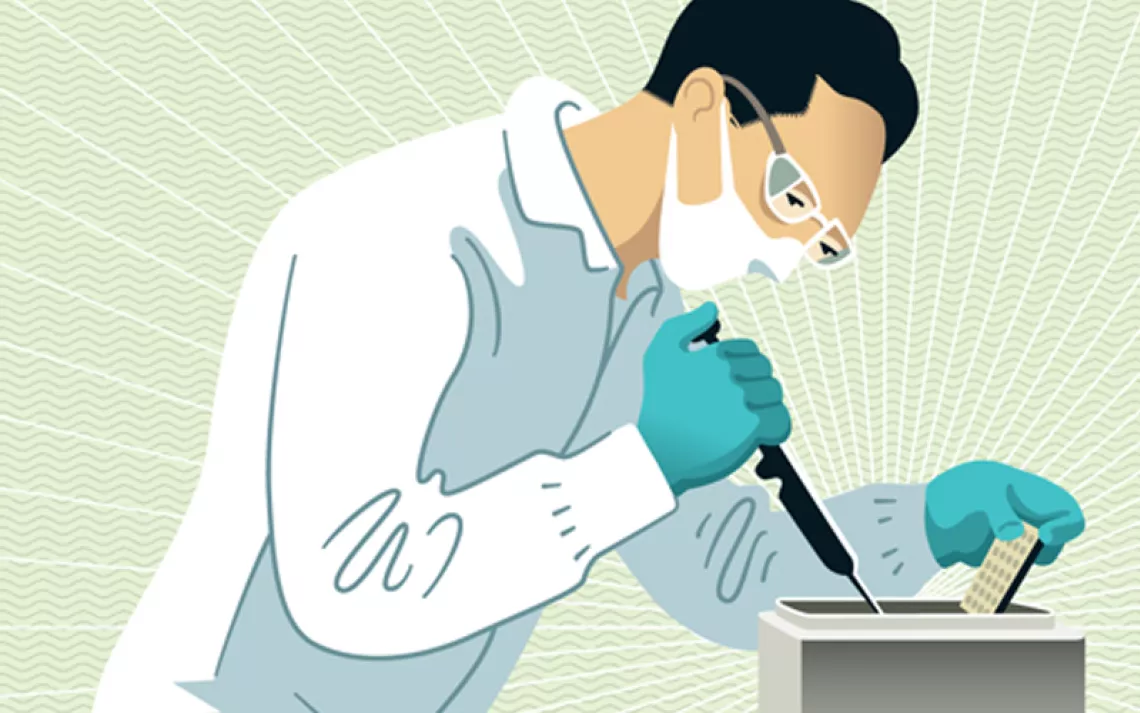Poachers v. Drones: The Next Frontier

Black rhinoceros in Lewa Conservancy, Kenya could be less vulnerable to poachers if monitored by drones.
Satao the elephant was easy to spot from the air: his ivory tusks were so long that they touched the ground. The Kenyan Wildlife Service and Tsavo Trust hired pilots and conducted months of aerial surveillance on the forty-five year old elephant, knowing his massive tusks were poacher-bait. But on May 30, Satao was found dead in Kenya’s Tsavo East National Park, shot with a poison arrow, his face mutilated and stripped of its iconic tusks.
Could Satao’s death have been prevented? Thomas Snitch, a computer science professor at the University of Maryland, is convinced that drone surveillance might have kept him safe.
Using data collected from rhino radio collars, ranger reports on spottings and of rhino foods sources, Snitch and his team developed a model that shows where rhinos are more likely to be, which makes a 110,000 acre reserve much easier to protect. “If you go down to Southern Africa, to Kruger (National Park), Tanzania, Kenya, the areas that you have to patrol are huge. You can’t throw an unmanned aerial vehicle up into the night sky and expect to find something,” said Snitch. At around four in the morning he sends out drones to verify the model's predictions and confirm wildlife activity. The park then deploys rangers between the animals and where poachers are known to enter to intercept them before any animals are harmed. “The system works,” he said emphatically.
But with recent bans in South Africa and Kenya his drones have been grounded and the program is severely debilitated.
While mainly intended to discourage too-close-for-comfort wildlife oglers in the U.S., the African bans throw a wrench into plans for anti-poaching drones like Snitch’s. His program reduced poaching in Balule Game Reserve to almost zero because poachers feared being spotted by nocturnal drones. But Snitch believes they will return shortly, “As soon as the South African government announced there are no more UAVs flying, it’s open season out there,” said Snitch. Rhino poaching in South Africa has increased annually, totaling over 1,000 illegal kills last year alone.
Accepting American drones into their airspace is a national security issue for South African and Kenyan governments. “I can understand that concern,” said Snitch. “You read in the paper every day about US drone strikes killing Pakistanis, I’m sure that colors their view,” he said. “If you’re losing 1,000 rhinos a year whatever program you’re using, it’s not working very well. Why not try a new technology, in an appropriate way, to try and stop this?” asked Snitch.
Snitch is familiar with drones’ role in the military. The strategies he used for tracking rhinos were derived from a similar model he built to protect American troops in Iraq. “Rhinos are like American troops,” Snitch explained. “Troops move on certain paths at certain times, and you have individuals trying to kill those targets. The advantage with troops was we knew where they were going to be moving.” As opposed to rhinos, which don’t have pre-planned routes. “The key to both is anticipating where the area of conflict will be. Where will the two elements intersect?”
The World Wildlife Fund (WWF) has also begun looking into drone technology in Namibia after receiving a $5 million Google Global Impact Award in 2012. “Unmanned aerial vehicles must be used in conjunction with other technologies to be effective,” wrote Crawford Allan, director of WWF’s Wildlife Crime Technology Project, which is already testing drones in Waterberg Plateau Park. WWF’s strategy depends on tagged animals and speedy ranger deployment, though the program has not been fully integrated yet. Namibia’s Ministry of Environment and Tourism has been involved since day one and has agreed to integrate UAV systems into all domestic rhino and elephant habitats.
 The Magazine of The Sierra Club
The Magazine of The Sierra Club



